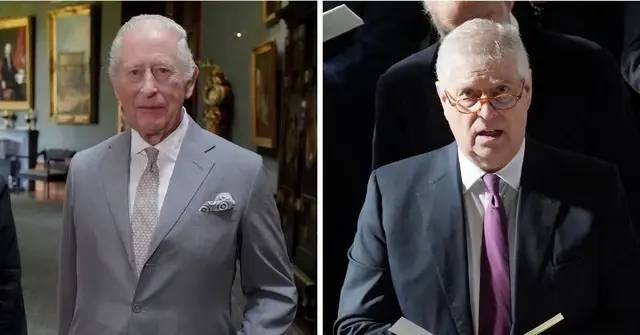Copyright brecorder

The recent establishment of the Tax Policy Office (TPO)—separating the critical function of tax policy design from the revenue collection mandate of the Federal Board of Revenue (FBR)—is more than a bureaucratic reshuffle; it constitutes a litmus test for economic governance in Pakistan. This institutional shift introduces a new framework poised to tackle one of the country’s most persistent policy challenges. For too long, the Federal Excise Duty (FED) on tobacco has been undermined by an ineffective institutional structure, creating a paradox that simultaneously costs the nation billions in lost revenue and exacerbates a severe public health crisis. The TPO now holds a historic opportunity to lead a transformative shift, aligning tobacco taxation with both fiscal prudence and public health imperatives. The end of the policy paradox The FBR’s previous structure suffered from an inherent conflict of interest: it was both the collector and the designer of tax policy. Its performance was narrowly measured by short-term revenue targets, making it susceptible to lobbying by the tobacco industry. The industry’s primary defence against effective taxation—the unsubstantiated claim that higher taxes immediately trigger a surge in illicit trade—often went unchallenged. Historically, the FBR consistently maintained a multi-tiered FED structure, oscillating between two and three tiers (e.g., shifting from two to three in 2017–18, then reverting to two in 2019–20). This tiered approach, with tax differentials often exceeding a threefold gap between the highest and lowest tiers, proved fiscally counterproductive. It created a wide and lucrative price gap, incentivizing manufacturers to concentrate production in the lowest-taxed tier. This structural incentive kept the lowest-tier cigarette prices artificially low and sustained high affordability, directly undermining the public health objectives of the WHO Framework Convention on Tobacco Control (FCTC). While the FBR successfully imposed significant FED rate increases in periods like 2022-23—a commendable effort that immediately boosted revenue and resulted in a reported 19% (SPDC survey) decline in consumption—this partial success was evidenced when full-year collections for 2023-24 pushed FED revenues from cigarettes to approximately PKR 237 billion. Despite this fiscal achievement, the system’s administrative vulnerability was exposed by an accompanying increase in illicit trade. The resulting revenue and public health losses were not incidental—they were an institutional inevitability under the old structure. TPO’s mandate: policy based on economic principle The TPO is mandated to apply sound economic principles and evidence-based analysis in the design of tax policy. Importantly, it is now empowered to treat the tobacco FED not merely as a source of revenue, but as a strategic tool to internalize a significant negative externality—the estimated PKR 615 billion annual cost of tobacco-related diseases. This newfound independence calls for a clean break from the complex, multi-tiered taxation system that characterized past practice. The TPO should move decisively toward a simple, uniform, and high-rate specific excise duty—a flat rate per pack of 20 sticks. A single-tier system eliminates the incentive for manufacturers to shift production to lower-taxed brackets, simplifies administration, and serves as the most effective policy tool to reduce consumption while maximizing long-term, stable revenue. Adopting this structure would also bring Pakistan in line with global best practices. FBR’s focus: enforcement as the primary defence With tax policy now under the purview of the TPO, the FBR gains the opportunity to concentrate its efforts solely on administration, enforcement, and compliance. The long-standing argument that high tobacco taxes fuel illicit trade is thus transformed from a matter of policy design into an enforcement challenge that falls squarely within the FBR’s new, focused domain. The partial success of past tax hikes—where rising rates led to consumption decline but also an increase in illicit trade (such as the estimated 33% illicit share noted in recent SPDC survey)—underscores the urgency of the FBR’s new mission. The success of this institutional transition will depend critically on the FBR’s ability to ensure compliance under the new, streamlined tax regime. Central to this effort is the effective deployment of digital enforcement tools, particularly the Track and Trace System, to monitor and account for every cigarette stick produced. Should the TPO adopt a clear and simple high-rate specific tax, the complexity that previously hindered effective administration will be removed. The FBR will then be well-positioned to demonstrate that its strengthened administrative capacity can complement policy ambition with robust and transparent enforcement. Setting the stage for a dual victory This institutional shift creates a powerful synergy: the TPO delivers health-driven, economically sound tax policy, while the FBR ensures focused, effective enforcement. Together, they offer Pakistan its clearest opportunity yet to reclaim billions in lost revenue and meet its urgent public health and development obligations. If successful, this model will not only transform tobacco taxation—it will set a precedent for evidence-based, collaborative reform across the broader tax system. The stakes are high, but so is the potential for a dual victory: healthier citizens and a stronger, more resilient economy. Copyright Business Recorder, 2025



